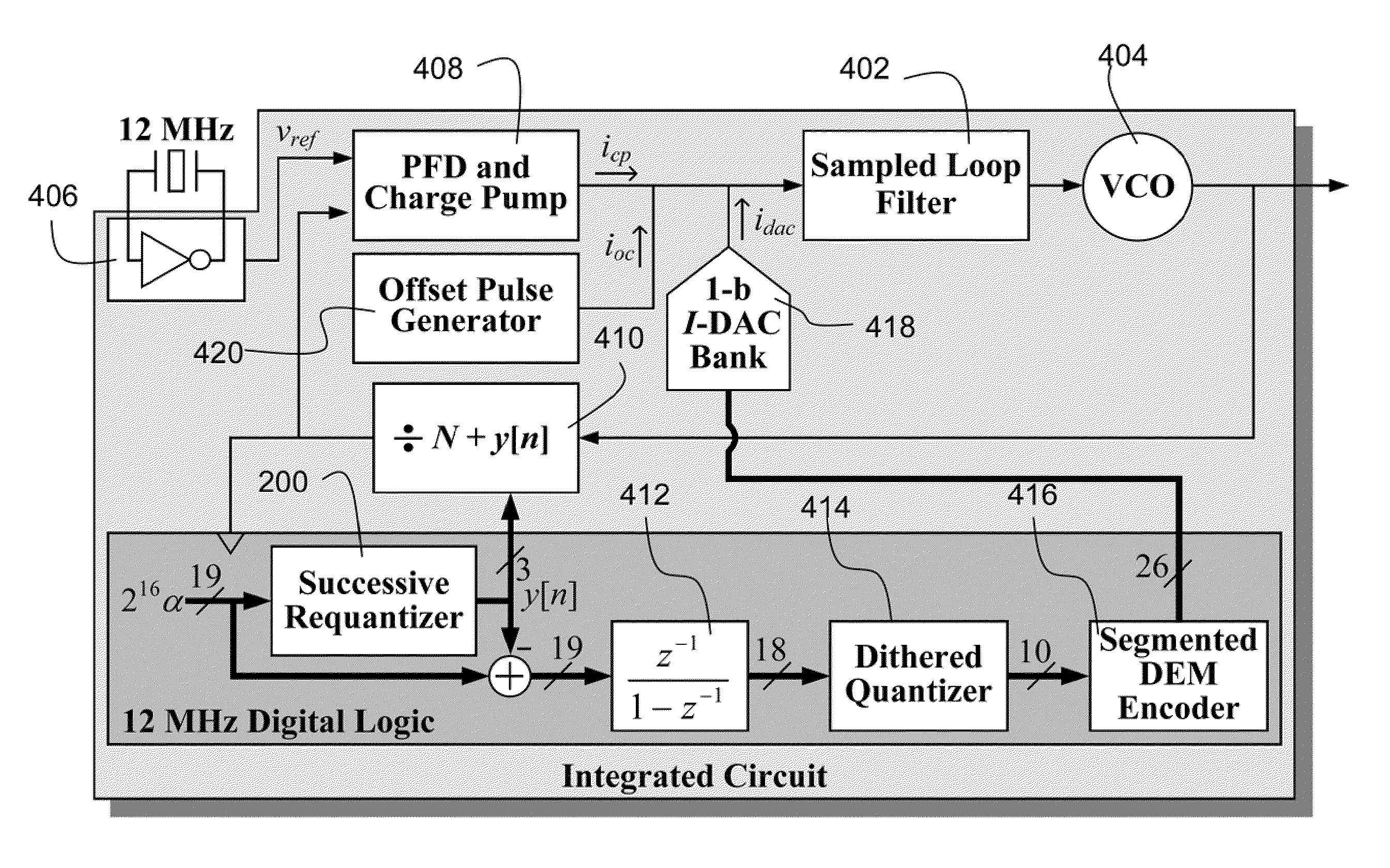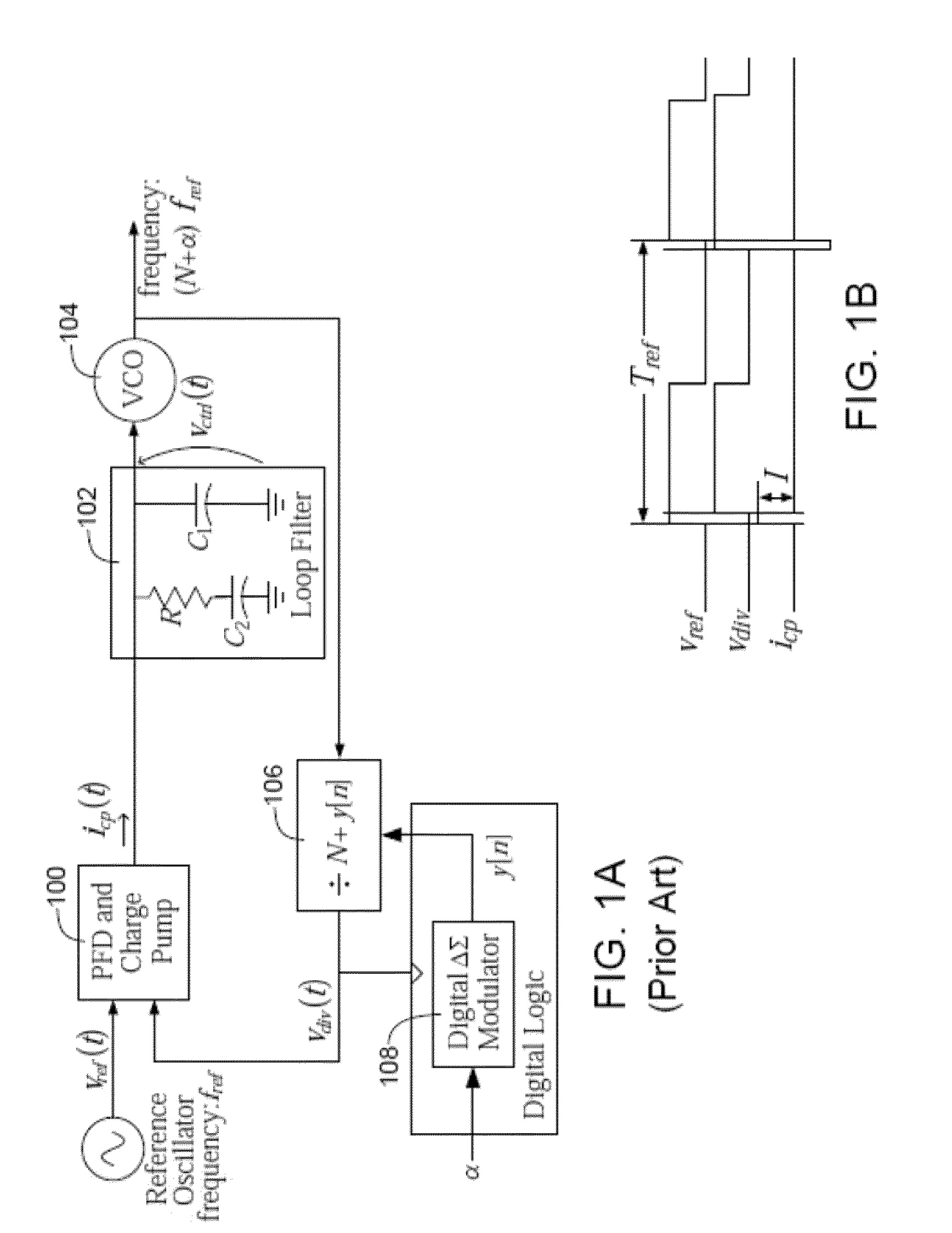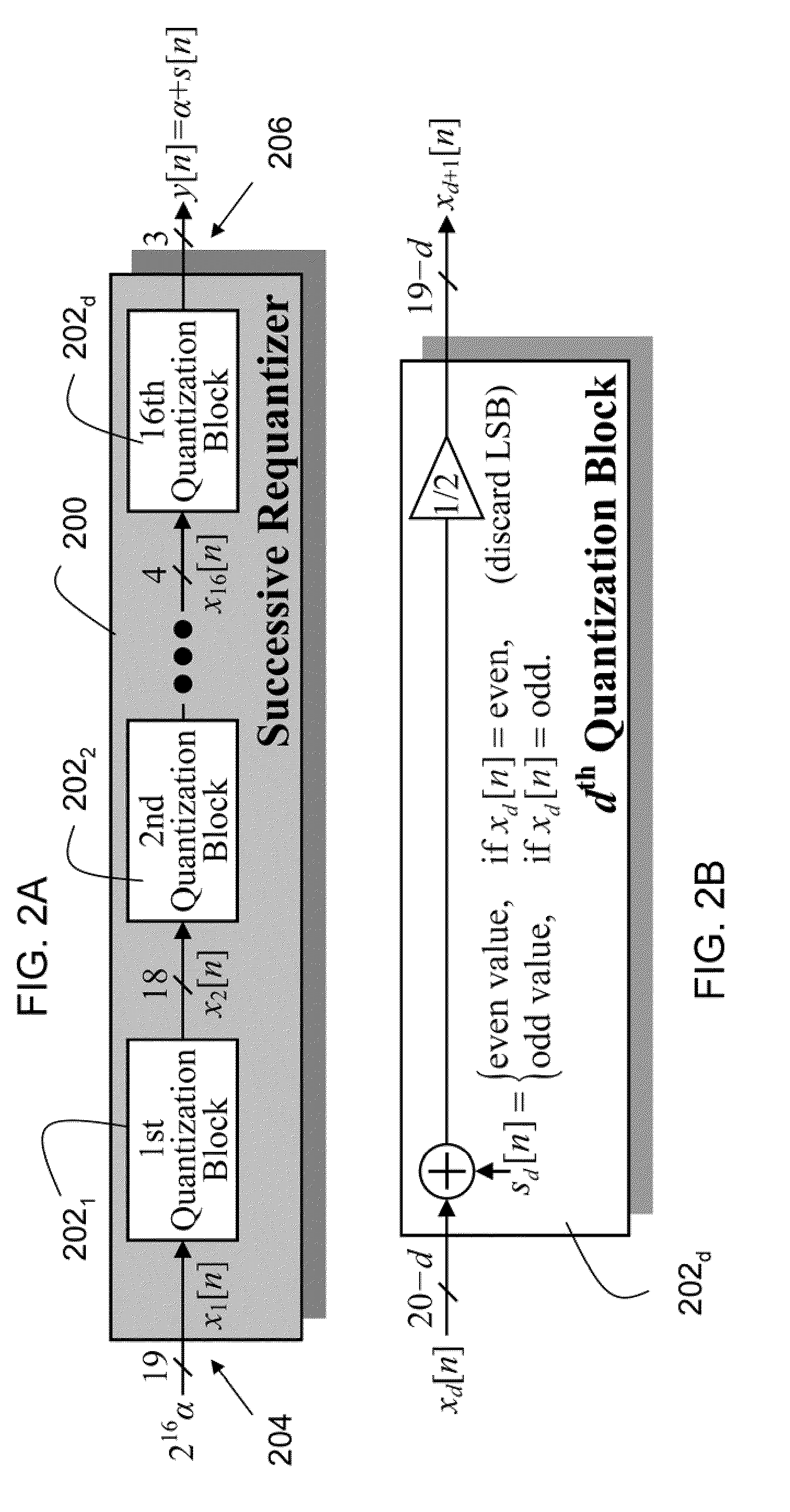Nonlinearity robust successive requantizer
a requantizer and robust technology, applied in the field of wireless communication, can solve the problems of reducing the performance of other aspects, reducing the power consumption and the cost of commercial communication devices, and requiring stringent spurious tone requirements for dacs in wireless applications
- Summary
- Abstract
- Description
- Claims
- Application Information
AI Technical Summary
Benefits of technology
Problems solved by technology
Method used
Image
Examples
Embodiment Construction
2A is a block diagram of a preferred embodiment successive requantizer for a fractional-N PLL or DAC;
[0016]FIG. 2B illustrates the general form of a preferred embodiment quantization block in the successive requantizer of FIG. 2A in which all variables are integer-valued two's complement numbers;
[0017]FIGS. 2C-2E illustrates detail on the sequence generation of the successive requantizer of FIGS. 2A-2B;
[0018]FIG. 3A is a block diagram that shows the register transfer level details of the dth quantization block of FIG. 2A, and FIG. 3B illustrates the combinatorial logic truth table of an example implementation of sequence generation logic; and
[0019]FIG. 4 is a block diagram of a preferred embodiment prototype fractional-N PLL or DAC.
DETAILED DESCRIPTION OF THE PREFERRED EMBODIMENTS
[0020]It is critical spurious tones in the noise introduced by DACs and fractional-N PLLs have very low power. Unfortunately, spurious tones are inevitable in the phase noise of fractional-N PLLs. In princi...
PUM
 Login to View More
Login to View More Abstract
Description
Claims
Application Information
 Login to View More
Login to View More - R&D
- Intellectual Property
- Life Sciences
- Materials
- Tech Scout
- Unparalleled Data Quality
- Higher Quality Content
- 60% Fewer Hallucinations
Browse by: Latest US Patents, China's latest patents, Technical Efficacy Thesaurus, Application Domain, Technology Topic, Popular Technical Reports.
© 2025 PatSnap. All rights reserved.Legal|Privacy policy|Modern Slavery Act Transparency Statement|Sitemap|About US| Contact US: help@patsnap.com



